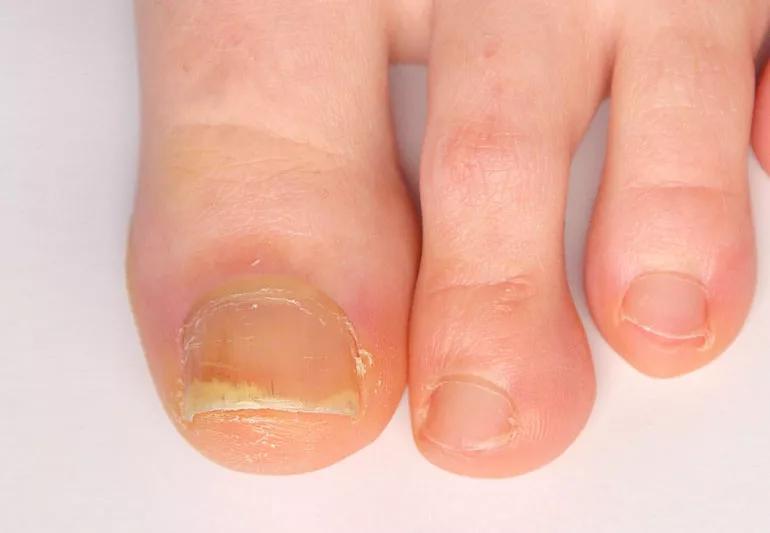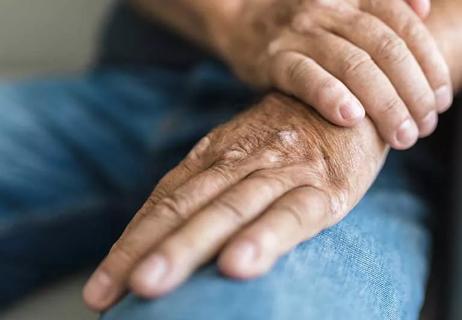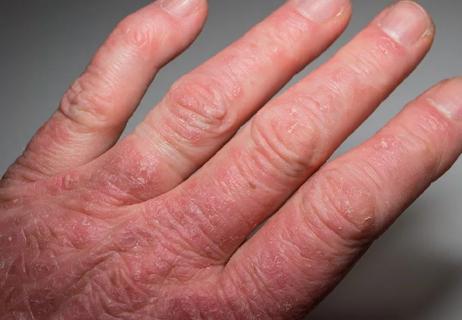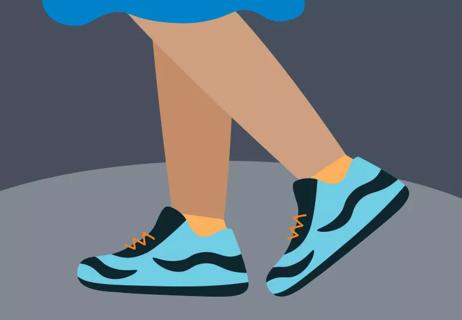Symptoms of nail psoriasis and how to treat it

If you’re living with psoriatic arthritis, you know how it can affect your skin and joints. Odds are, you’ve noticed changes to your nails, too.
Advertisement
Cleveland Clinic is a non-profit academic medical center. Advertising on our site helps support our mission. We do not endorse non-Cleveland Clinic products or services. Policy
Fingernail and toenail differences are quite common with psoriasis and psoriatic arthritis.
People are often bothered by these nail changes, says rheumatologist M. Elaine Husni, MD, MPH. “They can be troubled by the cosmetic aspects of nail symptoms. What’s more, these changes can sometimes cause discomfort,” she says.
But like other symptoms of psoriasis and psoriatic arthritis, nail symptoms can be managed.
Psoriasis and psoriatic arthritis are autoimmune diseases that cause inflammation.
Nail symptoms are common in people with psoriasis — and even more common in those with psoriatic arthritis. As many as 80% of people with psoriatic arthritis notice changes in their nails. In fact, nail symptoms can be an early warning sign of this type of arthritis.
Nail symptoms, it turns out, are more than skin deep.
Each of your nails is made of three components:
Advertisement
“Psoriasis and psoriatic arthritis can affect all three parts of the nail,” Dr. Husni explains. “Depending on where it strikes, you can experience several different nail symptoms.”
With psoriatic arthritis, some people might experience changes with just a few nails while others might notice changes with all of their fingernails and toenails.
Nail changes due to psoriasis and psoriatic arthritis come in many different forms:
To treat psoriatic arthritis nail changes, your doctor may prescribe topical creams or ointments to rub on your nails. Systemic medications (ones that affect the entire body) to treat psoriasis or psoriatic arthritis can also help a lot. These medications might include:
Treating psoriasis and psoriatic arthritis can help reduce the uncomfortable symptoms of nail psoriasis. The following tips can also help keep your nails healthy and pain-free.
Managing the symptoms of psoriatic arthritis can be a handful. With some TLC, you can keep those hands healthy. Toes, too.
Advertisement
Learn more about our editorial process.
Advertisement

Choose foods high in omega-3s and antioxidants; avoid red meat and dairy

Cold or hot therapy, massage and exercise may help reduce pain and inflammation in your joints

Focus on sleep, limit alcohol and reduce your stress and anxiety to help lessen symptoms

What’s the difference between these types of inflammatory arthritis?

The link between joint pain and skin rashes

What’s the difference between these types of arthritis?

Managing psoriatic arthritis foot pain

Does arthritis make you tired?

If you’re feeling short of breath, sleep can be tough — propping yourself up or sleeping on your side may help

If you fear the unknown or find yourself needing reassurance often, you may identify with this attachment style

If you’re looking to boost your gut health, it’s better to get fiber from whole foods